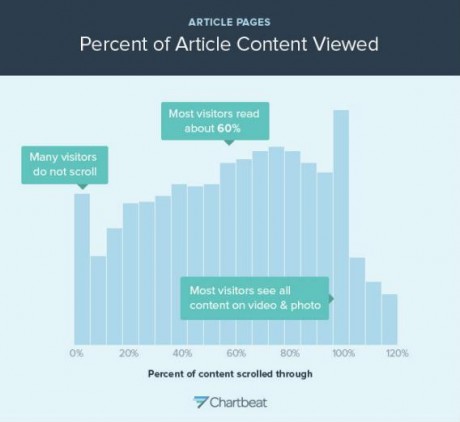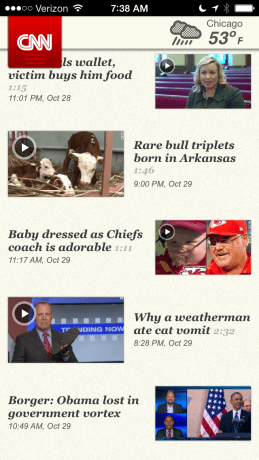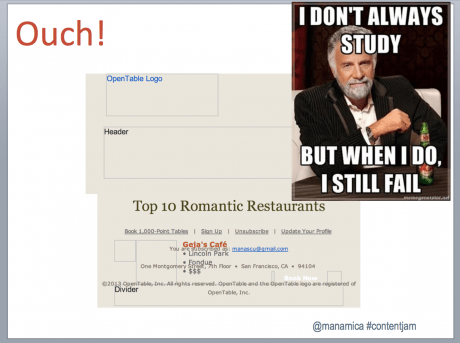Of the articles you read online today, many did you finish? How about images and videos? How many did you “finish”? Most people won’t finish this article. Most readers only get through 60% of an article. How can you beat these odds? Here are five tips on how to make your content stickier and thus more memorable than the average article.

Data from Chartbeat published by Slate shows, across multiples sites, that on average people only read about 60% of the content on a page. However, most visitors see all content on video and photo.
So, web users (which is pretty much all of us) have short attention spans. Keeping readers tuned in requires a few tricks:
1. What’s in it for me?
Start with the “why.” Why should your reader care about what you wrote? Why does your opinion matter? With every second that passes you lose readers. So don’t waste any time. Start by telling the reader how your article will help her.
Will your tips help me make more money? Say so – “5 Ways to Add Extra $s to the Bottom Line.” Will they make me laugh or go “awww.” Start with that – “These pictures are so adorable you’ll catch yourself going awwww.”
Of course the “why” will depend on audience. If your audience needs to know how to get a high GRE score, your content should serve that purpose. But it’s safe to say that no one wants to read boring content. Not even the future graduate student.
So write useful content that’s not boring.
2. Use headlines and categories
Break down the information into digestible chunks. If a paragraph is longer than 2-3 sentences it may be too long. If a thought goes longer than 2 paragraphs it may be too long. Self-imposing length limits your writing is a good exercise to learn how to be concise.
2. Write like you speak
Here’s how you’ll know if your writing is accessible – read it loud. And no, I don’t mean “in your head.” I’m clarifying because I ask my team the same question and sometimes their “out loud” can’t be heard. Deliver it out loud. How does it sound?
3. Read to someone else.
Ask them, how did this make you feel? Did it confuse them, did it bore them? How would they say the same thing? Then rewrite.

4. Write in lists
Even “old-school” publications such as CNN.com have picked up on this. Take a look at the Mashable and Buzz Feed-style articles appearing now on CNN.com. Even when talking politics, the numbered/list headlines rule.

5. Add the wow or awww!
Mainstream media are starting to add the “adorable” touch to their news. Cute and unusual sells.
You can be Grumpy-cat about it, and wish it would just go away, or you can adopt the method.
My favorite method is to add memes into my presentations (see example below). I tend to think I’m not funny, so I borrow others’ jokes.

6. Re-write
The key to good writing is rewriting. And by rewriting I don’t mean moving a comma here and there. I mean reading and editing with a critical eye. It helps to take a break and edit a day later.
Good writing takes work. Concise yet appealing writing is even harder. There’s no easy way out.
You have to put in the work. If it helps, here’s a cute kitten to keep you company while you edit. Now get to work!


Leave a Reply